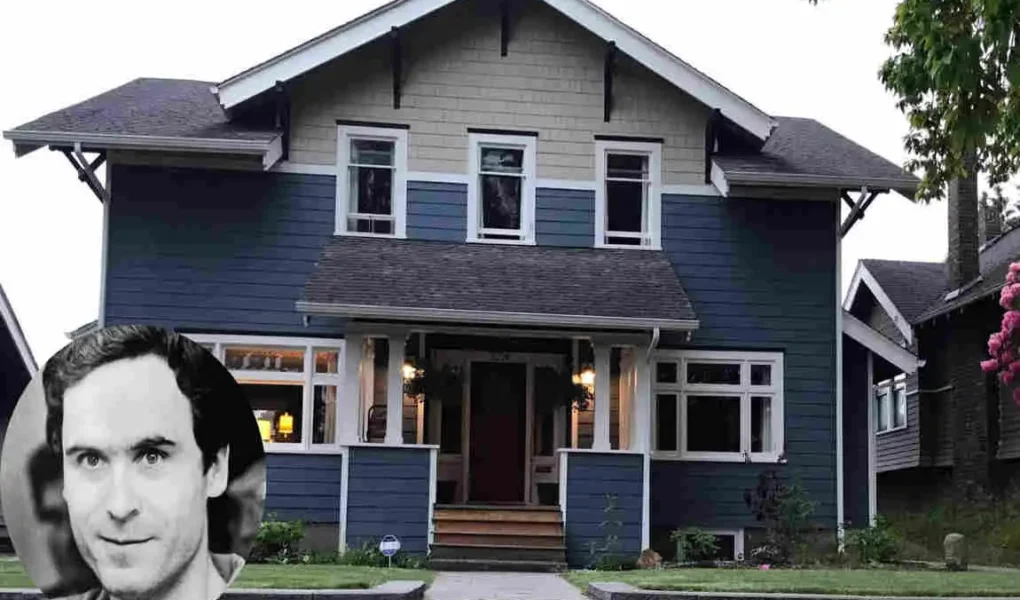The human fascination with darkness runs deep, particularly when it comes to the homes of notorious criminals. There’s something profoundly unsettling about ordinary-looking houses that harbored extraordinary evil. Among these infamous dwellings, few capture our morbid curiosity quite like the Ted Bundy house.
| Category | Information |
|---|---|
| Full Name | Theodore Robert Bundy |
| Birth Date | November 24, 1946 |
| Birth Place | Burlington, Vermont, USA |
| Death Date | January 24, 1989 |
| Cause of Death | Executed by electric chair |
| Criminal Activity | Serial killer and rapist, confessed to 30 murders (suspected more) |
| Known For | Brutal murders across multiple U.S. states during the 1970s |
| Personal Life | Had relationships including a wife (Carole Ann Boone) and a daughter (Rose) |
| Net Worth | No credible net worth recorded due to criminal background |
| Current Residence | Deceased since 1989; no current residence |
Understanding the history of Bundy’s residences offers us unique insights into criminal psychology and the dual lives that serial killers often lead. For true crime enthusiasts and students of human behavior, exploring these spaces helps us comprehend how someone could maintain such a devastating double existence. The ordinary appearance of these homes reminds us that evil doesn’t always announce itself—sometimes it hides behind white picket fences and manicured lawns.
Background on Ted Bundy: The Man Behind the Monster
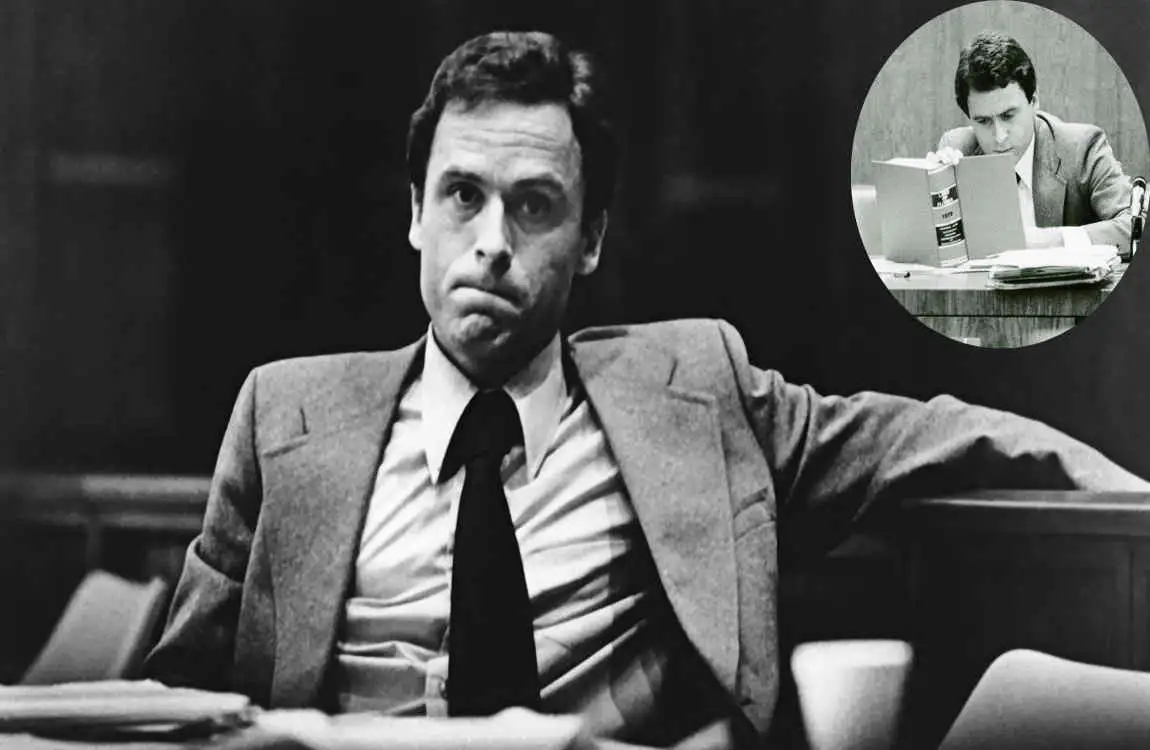
Before we step through the threshold of the Ted Bundy house, we need to understand the man who called it home. Born Theodore Robert Cowell on 24 November 1946 in Burlington, Vermont, Bundy’s early life was marked by confusion and deception. He grew up believing his mother was his sister and his grandparents were his parents—a family secret that would only be revealed years later.
Bundy presented himself as the all-American man. He was handsome, articulate, and charismatic. He studied psychology at the University of Washington, worked on political campaigns, and even volunteered at a suicide prevention hotline. To those who knew him casually, he seemed like someone destined for success.
But beneath this carefully crafted exterior lurked a predator. Bundy’s crimes typically followed a chilling pattern. He would feign injury or disability to lure young women to his vehicle, often using props like fake casts or crutches. Once he had gained their trust, he would overpower them. His victims were usually attractive young women with long, dark hair parted in the middle—a detail that has haunted criminal psychologists for decades.
The locations Bundy chose, including his various residences, played crucial roles in his criminal activities. His historic homes served as bases of operation, places where he could plan his attacks and, in some cases, bring victims. Understanding the Ted Bundy house and other residences he occupied helps us piece together the geography of his crimes and the calculated nature of his actions.
The Dual Life Phenomenon
What makes Bundy particularly fascinating—and terrifying—is how successfully he maintained his double life. By day, he was a law student, a political volunteer, a seemingly normal member of society. By night, he was hunting. His homes, including the infamous Ted Bundy house, were stages where this Jekyll and Hyde performance played out daily.
The History of Ted Bundy’s House
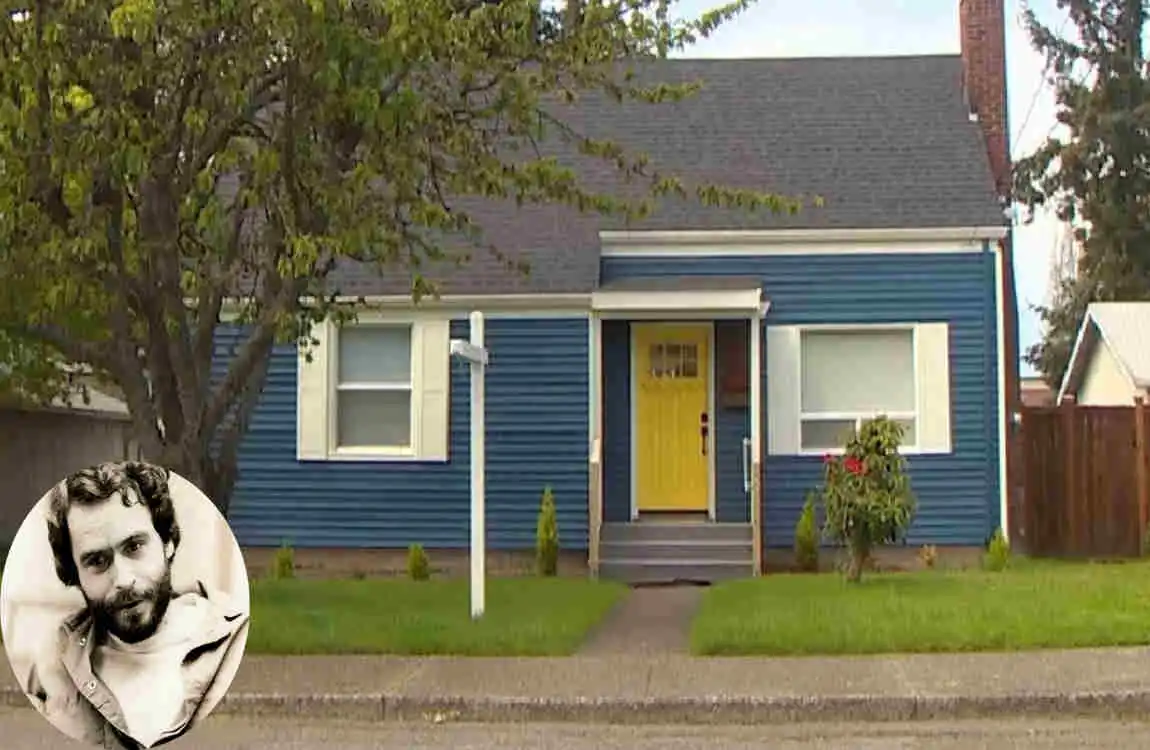
The Ted Bundy house that has captured the most attention is located at 565 First Avenue in Salt Lake City, Utah. This modest dwelling became Bundy’s residence in September 1974, during a particularly active period of his killing spree. The house itself was built in the early 1900s, a typical example of working-class American architecture from that era.
| Residence | Specifications/Architecture | Address | Estimated Worth | History/Info |
|---|---|---|---|---|
| Salt Lake City Den | Basic, unremarkable residential building | Salt Lake City, Utah | Not publicly estimated | Place where Bundy lived during some of his crimes in 1974-1975. Known for a fire escape he used to sneak in. Mostly utilitarian living space. |
| Childhood Tacoma Home | Typical mid-20th century house, simple design | Tacoma, Washington | Not publicly estimated | Bundy’s childhood home, no notable architectural significance. |
| Woodmere House (Not Bundy’s house but on Bundy Drive) | Mission Revival style, stucco, U-shaped, red clay tile roof | 420-430 South Bundy Drive, Los Angeles, CA | Historical value due to architecture, estimated market price varies | Built 1916, designed by Sidney Hawks Woodruff, distinct Mission Revival features with a courtyard, hardwood floors, French doors. Not related to Bundy personally. |
Before Bundy moved in, the house had been home to several unremarkable families. It sat in a quiet neighborhood, surrounded by similar homes filled with people going about their daily lives. Nothing about the structure suggested it would one day become infamous as the Ted Bundy house.
Bundy rented a room in the house while attending the University of Utah Law School. He lived there as a tenant, sharing the space with other residents who had no idea about his dark activities. During his time at this address, Bundy was actively hunting victims across Utah and neighboring states. The stunning house served as his base of operations, a place where he could retreat after his crimes and maintain his facade of normalcy.
Significant Events During Bundy’s Occupancy
Several crucial events occurred during Bundy’s time at the Salt Lake City house:
- October 1974: While living at the house, Bundy abducted and murdered Melissa Smith, the 17-year-old daughter of a local police chief.
- November 1974: Laura Aime disappeared after leaving a Halloween party. Her body would later be found in American Fork Canyon.
- The Carol DaRonch Incident: Perhaps most significantly, it was during his residence at this house that Bundy attempted to abduct Carol DaRonch from a shopping mall. She escaped and later became a key witness in his trial.
The house became permanently linked to Bundy’s dark legacy when police finally began connecting him to the string of disappearances. His arrest in August 1975 would eventually lead investigators back to this unassuming residence, transforming it from an ordinary rental into the notorious Ted Bundy house.
Layout and Physical Description of the Ted Bundy House
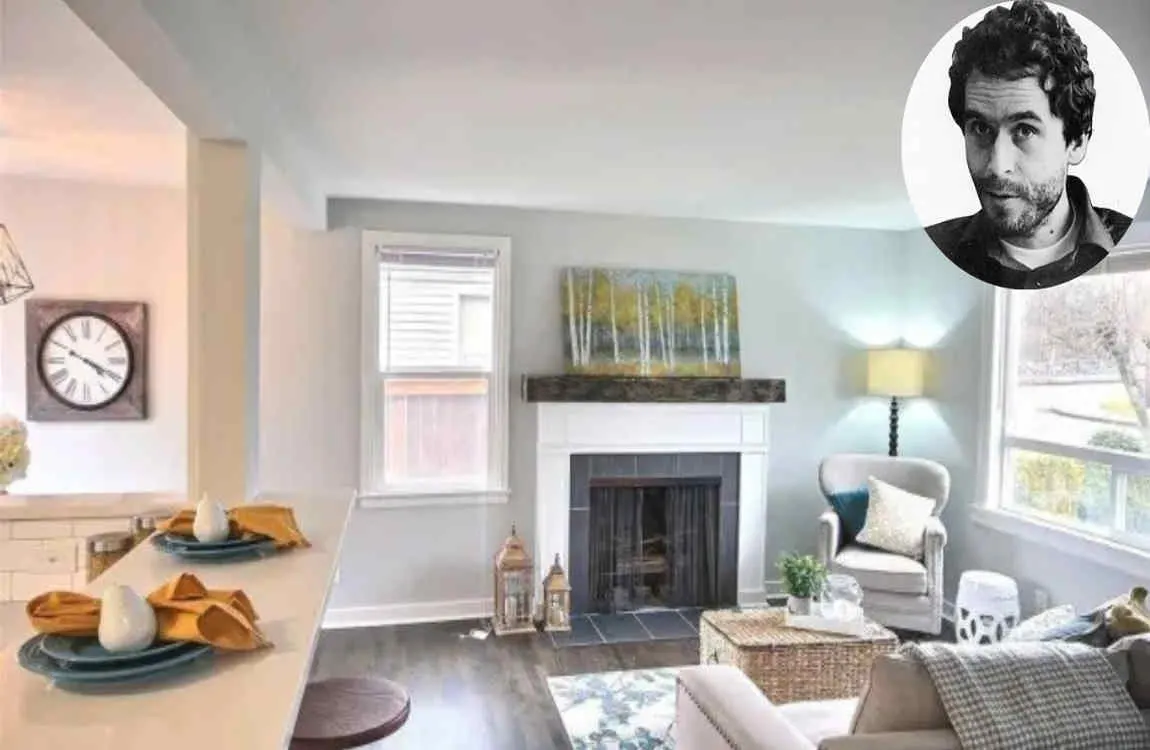
The Ted Bundy house at 565 First Avenue was a modest two-story structure typical of early 20th-century American residential architecture. The exterior featured wooden siding painted in neutral colors, with a small front porch that gave it an inviting, homey appearance. This ordinary facade was ideally suited to Bundy’s needs—it allowed him to blend seamlessly into the neighborhood.
Inside, the house was divided into several rental units. Bundy occupied a basement apartment, which provided him with privacy and a separate entrance. This arrangement was ideal for someone leading a double life. The basement space included:
- A small living area with basic furnishings
- A bedroom barely large enough for a single bed and a dresser
- A compact kitchenette with essential appliances
- Access to a shared bathroom
The basement’s isolation from the main house proved significant. Other tenants rarely ventured down there, giving Bundy the privacy he needed. The separate entrance meant he could come and go at odd hours without attracting attention—a crucial factor for someone engaged in nocturnal hunting.
The House Today
The original Ted Bundy house no longer stands in its original form. After gaining notoriety, the property underwent several changes:
- Renovation attempts to distance it from its dark past
- Multiple ownership changes as people discovered its history
- Eventually, significant structural modifications that altered its appearance
Today, while the address remains, the building has been so transformed that it bears little resemblance to the house Bundy knew. Some true crime enthusiasts still visit the location, but they find only echoes of its infamous past. The physical erasure of the original structure reflects society’s desire to move beyond the horror while acknowledging that some stains on history can never be thoroughly washed away.
Crimes Associated with the Ted Bundy House
The Ted Bundy house served as more than just a residence—it was a strategic location from which Bundy launched his reign of terror across Utah. During his time at 565 First Avenue, several victims disappeared under circumstances that investigators would later link to him.
The Melissa Smith Case
On 18 October 1974, Melissa Smith vanished after leaving a pizza parlor in Midvale, Utah. The 17-year-old was the daughter of the Midvale police chief, making her disappearance particularly high-profile. Her body was discovered nine days later in Summit Park, showing signs of the brutal violence that had become Bundy’s signature.
During this period, Bundy was living at the Salt Lake City house, using it as his base while attending law school. Investigators later theorized that he had stalked Melissa for some time before striking, possibly even following her from locations near his residence.
Laura Aime’s Disappearance
Just weeks after Melissa Smith’s murder, Laura Aime became another victim. The 17-year-old disappeared after leaving a Halloween party in Orem on 31 October 1974. Her remains weren’t discovered until nearly a month later in American Fork Canyon.
What makes this case particularly chilling is the proximity in time to the Smith murder. Living at the Ted Bundy house gave Bundy a central location from which he could strike at victims across the region while maintaining his law student persona.
The Carol DaRonch Incident: A Turning Point
Perhaps the most significant event connected to Bundy’s time at the house was his attempted abduction of Carol DaRonch on 8 November 1974. Posing as a police officer at a Murray shopping mall, Bundy convinced DaRonch to accompany him to his vehicle. Once inside, he attempted to handcuff her, but she fought back fiercely and managed to escape.
This failed abduction proved crucial for several reasons:
- DaRonch survived to provide detailed testimony
- She gave police their first solid description of the attacker
- Her account helped establish Bundy’s modus operandi
Police Investigation and the House
When authorities finally began closing in on Bundy, the Ted Bundy house became a focal point of their investigation. After his arrest in August 1975, detectives searched the basement apartment, looking for evidence linking him to the disappearances.
While the search didn’t yield smoking-gun evidence, investigators noted several disturbing details:
- The isolated nature of the basement apartment
- Easy access to major highways for quick escapes
- Proximity to several victim disappearance sites
The house’s location proved strategically perfect for Bundy’s activities. It sat near major transportation routes, allowing him to strike across a wide geographical area while maintaining a consistent stunning home base.
The Psychological and Symbolic Importance of Ted Bundy’s House
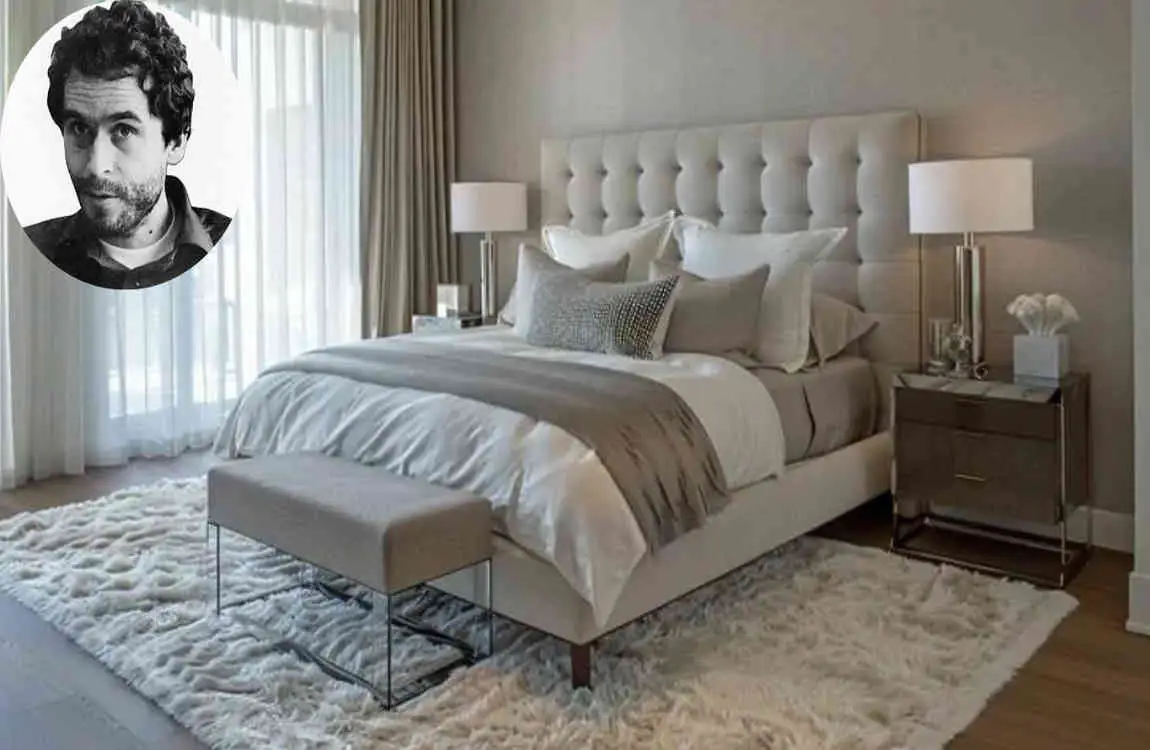
Understanding the Criminal Mind Through Space
Criminal psychologists have long recognized that serial killers’ living spaces offer valuable insights into their psychological makeup. The Ted Bundy house, with its unremarkable exterior and isolated basement apartment, perfectly reflected Bundy’s ability to compartmentalize his life.
Dr. Al Carlisle, a psychologist who evaluated Bundy, noted that killers like him often choose residences that support their dual existence. The basement apartment at 565 First Avenue provided:
- Physical separation from other residents
- A sense of control over his environment
- The ability to maintain different personas in different spaces
The Facade of Normalcy
The ordinary appearance of the Ted Bundy house symbolizes one of the most terrifying aspects of Bundy’s crimes—his ability to hide in plain sight. This wasn’t a Gothic mansion or abandoned warehouse; it was a regular house in a regular neighborhood where regular people lived.
This banality of evil challenges our assumptions about how monsters should look and where they should live. The house reminds us that predators don’t always lurk in shadows—sometimes they’re law students living in basement apartments, maintaining perfect GPAs while planning their next attack.
Environmental Psychology and Criminal Behavior
Experts in environmental psychology suggest that living spaces both reflect and influence behavior. In Bundy’s case, the isolation of his basement apartment may have reinforced his sense of separation from normal society. The physical descent into the basement could have symbolically represented his descent into his darker impulses.
The house also provided what criminologists call psychological sanctuary—a place where Bundy could retreat, plan, and maintain his false identity without interference. This safe space was crucial for sustaining his activities over an extended period.
The Ted Bundy House in Popular Culture and Media
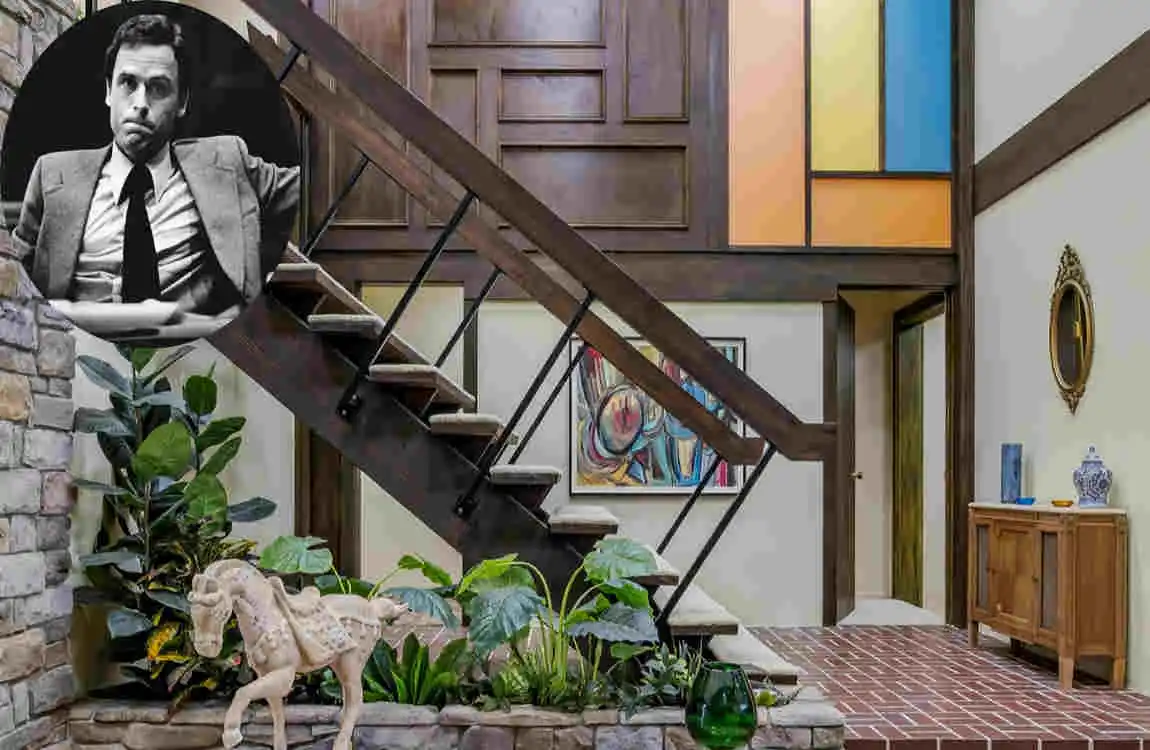
Documentary Depictions
The Ted Bundy house has featured prominently in numerous true crime documentaries. Productions like “Conversations with a Killer: The Ted Bundy Tapes” on Netflix include footage and discussions of his various residences, including the Salt Lake City house. These documentaries often use the house as a visual anchor, helping viewers understand the geographical scope of Bundy’s crimes.
Filmmakers frequently emphasize the contrast between the house’s ordinary appearance and the extraordinary evil of its occupant. Aerial shots of the neighborhood, street-level views of the luxury house, and recreations of the basement apartment have become standard elements in Bundy documentaries.
Hollywood Interpretations
Feature films about Bundy, including “Extremely Wicked, Shockingly Evil and Vile,” starring Zac Efron, have recreated the Ted Bundy case. These dramatizations often take creative liberties with the actual layout and appearance, emphasizing atmospheric elements that enhance the narrative tension.
The house serves as a powerful storytelling device, representing:
- The hidden nature of Bundy’s crimes
- The vulnerability of his victims
- The failure of society to recognize the danger
Books and Podcasts
True crime authors have extensively documented the Ted Bundy house in their works. Ann Rule’s seminal book “The Stranger Beside Me” includes descriptions of Bundy’s various residences. At the same time, more recent podcast series have dedicated entire episodes to exploring the significance of his living spaces.
Ethical Considerations
The media attention on the Ted Bundy house raises critical ethical questions:
- Glorification concerns: Does focusing on these locations glorify the killer?
- Victim sensitivity: How do families of victims feel about this attention?
- Community impact: What about current residents of the neighborhood?
Responsible media creators increasingly acknowledge these concerns, striving to balance public interest with respect for those affected by Bundy’s crimes.
Visiting the Ted Bundy House: What to Know
Current Status and Ownership
The property at 565 First Avenue remains privately owned, and the current structure bears little resemblance to the original Ted Bundy house. The extensive modifications mean that true crime tourists hoping to see Bundy’s actual living space will be disappointed.
The house is not open for tours, and the current owners understandably prefer to maintain their privacy. The property has changed hands several times since Bundy’s residence, with each owner grappling with its dark history.
Crime Tourism Considerations
For those interested in visiting the location, several factors should be considered:
Legal and Safety Issues:
- The property is private—trespassing is illegal
- Photography should be done in public areas only
- Respect for current residents is paramount
- Local law enforcement monitors suspicious activity
Ethical Considerations:
- Remember that real people died
- Consider the impact on the community
- Avoid treating tragedy as entertainment
Alternative Sites of Interest
For those interested in understanding Bundy’s story, several legitimate alternatives exist:
Location Significance Accessibility
Utah State Prison, where Bundy was first incarcerated. Historical tours available
University of Utah Law Library, where Bundy studied. Public access with restrictions
Salt Lake City Crime Museum Features Bundy exhibits , Open to the public
Various courthouses , Trial locations , and Public buildings
Responsible Engagement
If you choose to visit the area of the former Ted Bundy modern house, remember:
- Maintain respectful behavior
- Don’t disturb current residents
- Consider the educational value, not sensationalism
- Support legitimate historical preservation efforts
Lessons Learned from Exploring Ted Bundy’s House
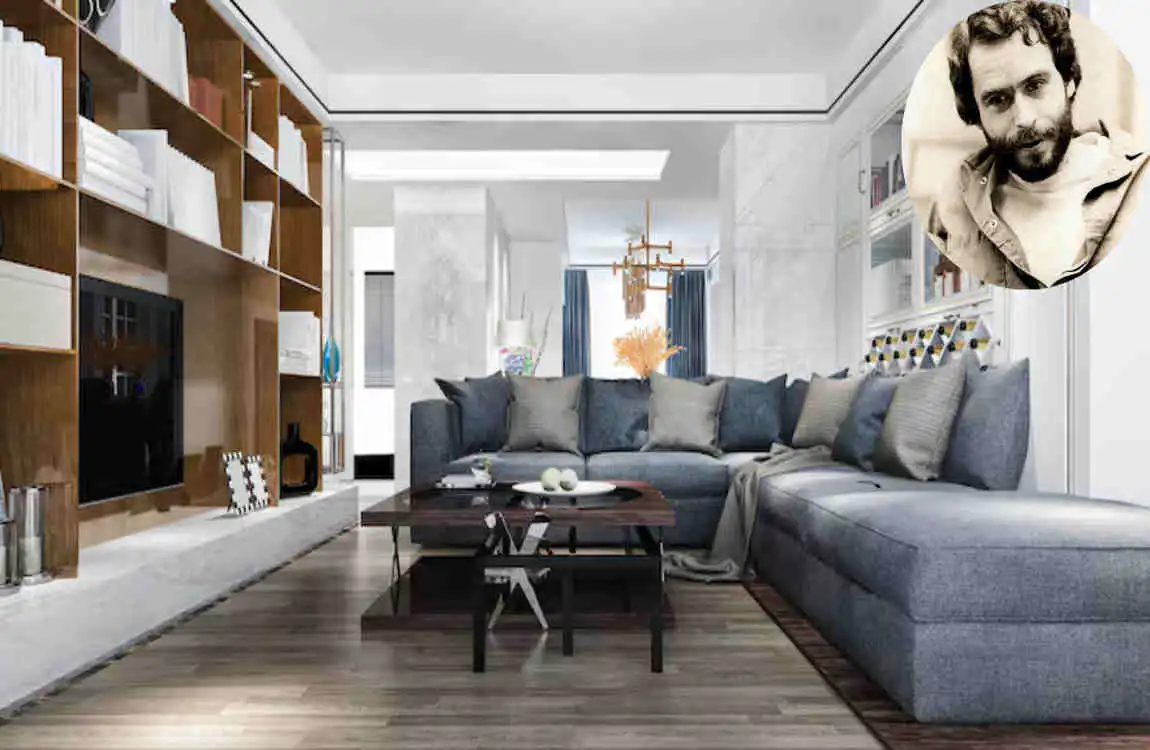
Community Awareness and Prevention
The story of the Ted Bundy house offers valuable lessons about community safety and awareness. Bundy’s ability to live undetected in a regular neighborhood highlights the importance of:
- Knowing your neighbors while respecting privacy
- Trusting instincts when something seems off
- Understanding that danger doesn’t always look dangerous
Communities can learn from this history without living in fear. The goal isn’t paranoia but rather informed awareness that helps protect vulnerable members of society.
The Importance of Survivor Stories
Carol DaRonch’s escape from Bundy near his Salt Lake City base serves as a reminder of the courage of survivors. Her willingness to testify helped bring Bundy to justice and potentially saved countless lives. The stunning house serves as a reminder that:
- Survivors’ voices matter
- Fighting back can make a difference
- Justice, though sometimes delayed, can prevail
Understanding Evil to Prevent It
Studying locations like the Ted Bundy house helps criminologists and psychologists better understand how serial killers operate. This knowledge contributes to:
- Improved investigative techniques
- Better victim support services
- Enhanced prevention strategies
- More effective criminal profiling
Historical Memory and Moving Forward
The transformation of the physical Ted Bundy house reflects society’s attempt to move beyond tragedy while preserving historical memory. We can acknowledge dark chapters of history without allowing them to define places or communities forever.
Ted Bundy House FAQ
What is the Ted Bundy House?
The Ted Bundy House refers to the residence at 565 First Avenue in Salt Lake City, Utah, where notorious serial killer Ted Bundy lived during part of his crime spree in the 1970s. This house became infamous due to its association with Bundy’s criminal activities.
When did Ted Bundy live in the house?
Ted Bundy lived in the house at 565 First Avenue from 1974 to 1975. During this time, he was actively committing murders and abductions in several states.
Is the Ted Bundy House still standing?
Yes, the house at 565 First Avenue in Salt Lake City is still standing. However, it has been renovated and is now a private residence.
Can you visit the Ted Bundy House?
No, the Ted Bundy House is a private residence and not open to the public. It is important to respect the privacy of the current occupants.
What crimes did Ted Bundy commit while living in this house?
While living at 565 First Avenue, Ted Bundy was involved in several abductions and murders. Some of his known victims during this period include:
- Carol DaRonch: Abducted but managed to escape.
- Melissa Smith: Abducted and murdered in October 1974.
- Laura Aime: Abducted and murdered in November 1974.
Has the Ted Bundy House been featured in any media?
Yes, the Ted Bundy House has been featured in various documentaries, books, and films about Ted Bundy. It often serves as a point of interest in discussions about his crimes.
Where Does Ted Bundy’s Currently Live?
Ted Bundy is deceased and does not currently live anywhere. He was executed on 24 January 1989, in a Florida State Prison by electric chair.
Ted Bundy House Photos




